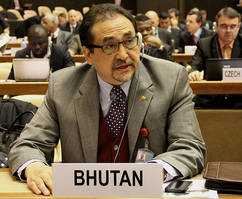|
Bhutan acceded to the Convention on 18 August 2005, and the Convention entered into force for Bhutan on 1 February 2006. Stockpile Destruction (Article 4)On 29 May 2007, Bhutan submitted its initial transparency report in which it indicated that it did not have any stockpiled anti-personnel mines under its ownership or possession or under its jurisdiction or control. Retained Mines (Article 3)Notwithstanding the obligation to destroy all stockpiled anti-personnel mines, the Convention permits the retention of the minimum number of anti-personnel mines absolutely necessary for the development of and training in mine detection, mine clearance, or mine destruction techniques. As of 2018, Bhutan reported having retained 211 anti-personnel mines for these permitted purposes. These mines are used for all officers and troops to be given basic and specialized training in mine clearance and the removal of improvised explosive devices. Mine Clearance (Article 5)In its initial transparency report, Bhutan indicated that there were areas under its jurisdiction or control in which anti-personnel mines are known or suspected to be emplaced. In accordance with Article 5 of the Convention, Bhutan undertook to destroy or ensure the destruction of all anti-personnel mines in these areas as soon as possible but not later than 1 February 2016. At the 2013 Meeting of the Standing Committee on Mine Clearance, Bhutan announced it had completed its mine clearance operations. Bhutan tabled a formal Declaration of Completion at the Thirteenth Meeting of the States Parties, later that same year. |
|



